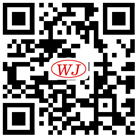
1、 Terminal deformation problem
1. The deformation of the elastic structure of the female terminal leads to the virtual connection with the male terminal.
2. Impurities enter the contact position of male and female terminals, affecting the terminal conductivity.
3. The male terminal is deformed (tilting forward and backward, left and right skew).
Male terminal deformation (forward tilt, backward tilt, left and right tilt) usually causes the following problems:
1. When the sheath is butted, the terminal is bent or broken;
2. The terminal enters other gaps, resulting in open circuit, short circuit or virtual connection.
Male terminal deformation (front and back tilt, left and right skew) is generally caused by improper packaging and assembly. However, it is also related to product structure and design selection.
2、 Product structure
The male terminal can be regarded as a cantilever structure in the sheath. Terminal deflection is the deflection change of cantilever beam in the direction of force. According to the deflection calculation formula, the deflection is directly proportional to the force and the distance between the force point and the support point, and inversely proportional to the cross-sectional area and the elastic modulus (affected by the material). It can be analyzed that the selection of terminals will affect the deformation of terminals in the following aspects.
1. Smaller terminal width and thickness
Generally, for small terminals, especially 1.0 and 0.64 terminals below 1.5, the thickness of the needle part of the terminal is only 0.6 mm, so the smaller the width of the terminal, the lower the bending strength of the terminal, and the easier it is to cause bending.
2. Terminal material is soft
Terminal materials are generally copper, brass, phosphor bronze, alloy copper, steel, etc. The hardness of copper is small, and the material directly affects the elastic modulus. Therefore, the softer the terminal is, the worse the deformation resistance is, and the easier it is to cause bending.
3. Terminal size is long
The longer the terminal size is, the longer the force arm is, and the greater the deformation of the top of the terminal when it is stressed.
Countermeasures:
1. Try to select terminals with larger width, but it is not conducive to the requirements of miniaturization and lightweight; It can be considered to widen the terminal root or increase the stiffener structure.
2. Hard phosphor bronze or alloy terminals are selected, but their conductivity is slightly poor; Generally, folded pin terminals are replaced by integrated pin terminals.
3. If the contact area is reasonable, try to select short terminals or increase the structure to shorten the stress size, such as adding a bending structure on the top of the terminal.
3、 Coordination between terminal and sheath
In the matching of male and female end sheaths, the smaller the terminal width, the higher the verticality requirement of the terminal. Therefore, the smaller the terminal, the higher the requirement for stability in the sheath after implantation.
Influence of terminal skew on matching between terminal and sheath:
1. The terminal and sheath are poorly matched.
The sheath of the terminal has large shaking. If it exceeds the hole boundary of the female end in both horizontal and vertical directions, it will easily lead to the bending of the terminal during docking.
2. The terminal is subjected to transverse stress.
Generally, the terminals at the edge of the sheath are triangular or side-out, so the terminals on both sides bear relatively large lateral tension. If the matching between the sheath and the terminal is poor, the terminal at these positions will deviate from the position of the mating hole at the female end.
3. Large number of sheath holes and large insertion force
The greater the number of holes in the sheath, the greater the insertion force between the male and female ends. At the same time, due to the large volume of the sheath, it is easy to cause non-vertical docking during operation. When the male terminal is butted with the female sheath, it will encounter needle withdrawal or extrusion deformation.
Countermeasures:
A. The manufacturer of male and female end sheath is the same as the terminal manufacturer, and mixing is prohibited.
B. Select connectors with secondary locking structure to reduce terminal shaking.
C. Good ones shall have strong guiding and error-proofing structures, especially the female end hole position shall have a butt guiding structure (such as funnel-shaped inclined plane). At the same time, the top of the male terminal is designed as a needle tip.
4. The bare wire allowance at the end of the sheath shall be appropriately relaxed to reduce the stress on the conductors on both sides. Pay special attention to the side outlet sheath, and the far end wire should have a certain degree of curvature.
The multi-hole sheath shall be the sheath of the booster structure as far as possible. This kind of sheath has a slow docking speed and uniform terminal stress. Generally speaking, the booster structure can only be used after the male and female ends are vertically installed.

Manufacturer of on-board harness, new energy charging pile harness, terminal harness, vehicle OBD2 diagnostic cable, LVDS harness
Copyright: Shenzhen Robust Electronics Co., Ltd